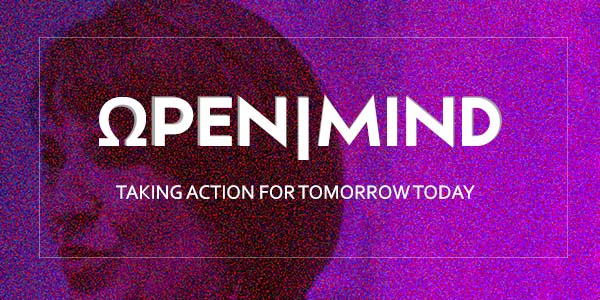
DALL·E generated digital art devil and priest
Has all the hoopla about Chat GPT got you wondering, “Should I finally bring AI to work?”
Or, is Artificial Intelligence in a hype cycle?
How do you decide?
AI has been like the boy who cried wolf. We kept hearing it was about to take over the world, but we couldn’t figure out exactly what to do with it.
I’m convinced that after years of false starts, it’s time for all of us (not only data scientists) to take artificial intelligence very seriously and to take bold action.
It’s time to bring AI to work. Here are three paths to help teams get started.
What Can We Learn From 100 Million Monthly Users?
Two months ago, ChatGPT, an artificial intelligence engine for translating search questions into text, smashed business leaders in the face with a tool that went from zero to a hundred million monthly users in two months. Whether we’re ready or not, the insanely fast and widespread adoption forced us to quickly figure out: how should we respond to AI?
Should we put up fences or build onramps?
What should business leaders do to lead in the age of AI? My view: look for inspiration and know how, learn fast, double down on your values, and jump in. That’s what I’ve done and I’d like to share some steps to get started.
Medicine Set the Stage for AI Adoption
Imagine a stockpile of unread x-rays in a hospital. Reading them would hold the key to knowing how to treat, heal, and cure thousands of patients. But, the backlog could also become a bottleneck if a doctor or small team gets behind. Being able to read the patterns faster and more efficiently—especially if the accuracy of the diagnosis is as reliable as the initial interpretation done by people—could be a lifesaver.
Today, AI is being successfully inserted into the medical care process to read those x-rays (and to speed up a number of other medical diagnostic procedures; approved by regulators and increasingly accepted by the medical community.
Bringing AI into the equation was a watershed moment for medicine. Could AI cause harm with incorrect diagnoses? Of course. Do doctors feel threatened by the insertion of AI into the medical domain? Absolutely (and the debate is important to safeguard patients.) But, it’s clear that some forms of AI are mission-critical to the practice of medicine, and leaders have stepped forward to pave the way for responsible growth of AI.
Healthcare has been reflecting on AI options gradually over a period of years.

ChatGPT is forcing business leaders to make decisions in a matter of weeks. Here’s a practical guide for how to take action.
- Look for Inspiration + Know How
In 2008, AI hadn’t fully come of age as a practical, user-friendly option for business leaders. But, in San Francisco, a group of technologists and investors saw an AI-enabled business future and by 2015 they established Bootstrap Labs as an AI-first fund* with focus on business in these categories:
Mobility
Future of Work
Health
Financial Infrastructure
Digital Infrastructure
Climate & Energy
Over the past decade, I’ve watched (and participated) as they led a global community with more than 300,000 members bring forward practical applications of artificial intelligence. They’ve recently added “studios” for Future of Work and Climate & Energy to expose leaders and working teams to AI’s potential—with immersion opportunities for business leaders from multiple disciplines.
What business leaders can do: Seek out communities where you can experience hands-on exposure to AI applications.
2. Learn Fast
Last week I judged a hackathon where the finalists presented innovative models designed to bring together AI + sustainability + business in four key areas:
Water Use Reduction in Farming
Gas Toxicity
Species Preservation
Moss as a Critical Component of Sustainability
The initiatives integrated data modeling, sensor technologies, and AI tools like Orange to fuel detection, monitoring, and communication on a large scale.
Did I mention that the teams were 14 – 19 years old?
The hackathon was sponsored by a global community called Youth AI, founded to bring together young people with a compelling mission we can all benefit from and learn from:
We at the Youth AI Lab aim to make this revolutionary technology more accessible to today’s youth, the future pioneers and problem solvers who will need to understand how to use AI ethically to solve the world’s problems.
Nothing beats young people as learners.
What business leaders can do: Get involved in hackathons, courses, communities. Start the path to learning here: Youth AI Lab

With Melinda Xu, co-founder Youth AI Lab
3. Double Down On Your Values
I’m shocked by how many doomsayers I’ve talked with since conversational AI like Chat GPT and GPT-3 came into vogue. Teams in fintech, manufacturing, mobility, agtech have come forward in meetings with so much resistance to allowing machine learning and AI to augment decision making.
The arguments against start with fears of losing control, fears of losing jobs, and fears of making our companies vulnerable to unintended consequences.
That’s why I chose to become an advisor to a program that’s proactively developing specific scenarios and principles to guide Responsible Digital Leadership. Called GAEIA, it is a collaboration between Stanford’s Center for Human Rights and International Justice and Cal Polytechnic’s Digital Transformation Hub.
Picture researchers representing 27 countries and 37 universities with expertise in law, engineering, social science, technologies in one intense learning cohort whose sole focus is to identify technology-related dilemmas and frame solutions applied through the lens of responsibility, and fairness.
What business leaders can do: Take agency over the unintended consequences of AI. Create a credo, create a mastermind group, join with peers to raise global standards, and lean in to your values inside your four walls.
100,000,000 people who grabbed the chance to use GPT-3 present a challenging leadership moment. I say, let’s grab it and lead AI for good.

GET TO NEXT | MasterClass Series
The Get To Next MasterClass Series is a sequence of videos presenting the Get To Next model in detail. Watch to find out how this systematic approach will make your life as an innovator easier, more successful, more purposeful, and more rewarding and how the modules work together to drive your innovation process from inception to implementation.

GET TO NEXT | Fundamentals
In the Get To Next Fundamentals course we teach you a system and a process to identify a promising idea and “take it to the bank” in five simple steps – quickly. Are you finding it challenging to run innovation at scale in these times of exponential change in a timely fashion? Are you calling many good ideas dead on arrival? Are projects being stymied in areas outside of your influence or control?

Andrea Kates is a San Francisco-based expert at moving innovation to revenue. She focuses on uncovering untapped opportunities and galvanizing strategic vision.
For 20 years she’s led bold initiatives in virtually every sector and every geography that help companies figure out where to place their bets on emerging products, services and technologies and to scale dynamic business models.
Today, Andrea works with leaders to discover their best future with a tangible, practical set of steps called: ➡ GET TO NEXT






